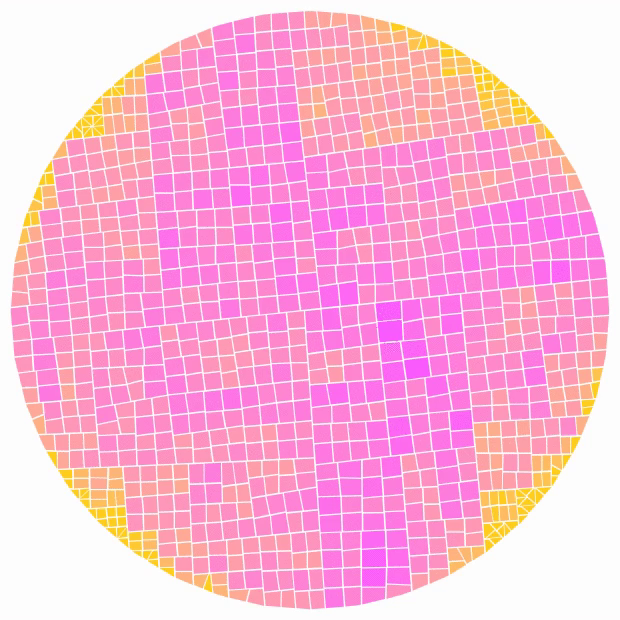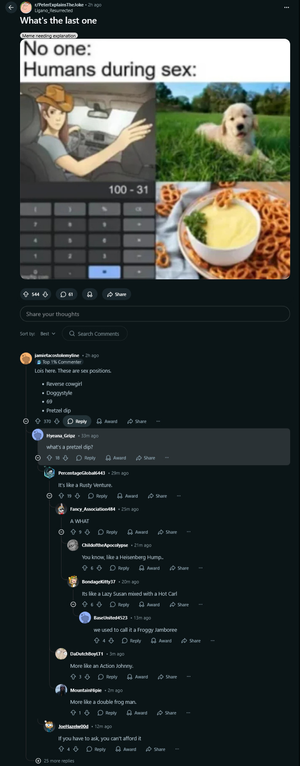2025-12-19 01:16:03
A look at Track Star, a YouTube music quiz show that has become a stop on the celebrity promo trail and has started creating documentary-style music features (Jessica M. Goldstein/New York Times)
https://www.nytimes.com/2025/12/17/arts/music/track-star-youtub…
2025-09-20 13:43:57
Have a joyful #DayOfDionysos here at Erotic Mythology! 🍇
"Dionysos may not be without noise on his voyage; and its prow is drawn out in the semblance of a golden leopardess. Dionysos is devoted to this animal because it is the most exciteable of animals and leaps lightly like a Bakkhe."
Philostratus the Elder, Imagines 1.19
🏛 Roman
2025-12-16 09:54:11
Recursive polygon subdivision inspired by thin-section mineralogy...
(The area of each polygon is mapped to a color from a gradient. Made with https://thi.ng/geom, see next message for example & source code...)
1/2
2025-11-16 16:49:55
I occasionally stop by Reddit for a couple of chuckles. As per usual - the magic is always in the comments
#ShamelesslyStolenFromReddit #shitpost #shitposting
2025-11-27 23:36:00
Tim Sweeney says it "makes no sense" for stores like Steam to label games that are made using AI, since AI "will be involved in nearly all future production" (Alex Forbes-Calvin/GamesIndustry.biz)
https://www.gamesindustry.biz/epics-sweene
2025-10-15 07:44:11
Deep Research Brings Deeper Harm
Shuo Chen, Zonggen Li, Zhen Han, Bailan He, Tong Liu, Haokun Chen, Georg Groh, Philip Torr, Volker Tresp, Jindong Gu
https://arxiv.org/abs/2510.11851
2025-10-07 21:26:38
I've had a few of these thoughts stuck in my craw all day because I watched this liberal historian talk about the Galleanisti.
https://youtube.com/shorts/93yHEn8BYE4
Basically, she says that "of course the government had the right to target them." Then she goes on to talk about how it became an excuse to carry out a bunch of attacks on other marginalized people. Now, the Galleanisti had been bombing the houses of politicians and such. I get where she's coming from saying that one of their targets "was in the right" to try to catch them. But there's some context she's not talking about at all.
These were Italian anarchists, so they were not white and they were part of an already marginalized political group. Basically all of Europe and the US was trying to wipe out anarchists at the time. Meanwhile, the sitting president at the time showed the first movie in the White House. That movie was KKK propaganda, in which he was favorably quoted. The US was pretty solidly white supremacist in the 1920's.
Like... A major hidden whole premise of the game "Bioshock: Infinite" is that if you went back to the US in the 1920's, and you had magic powers, you would absolutely use them to kill as many cops as possible and try to destroy society. There's a lot of other stuff in there, I don't want to get distracted, but "fuck those racists," specifically referring to the US in the 1920's, was a major part of a major game.
Those Italian anarchists were also stone cutters. They carved grave stones. But the dust from that can kill you, much like black lung for coal miners. So they were dying from unsafe working conditions, regularly raising money to support dying coworkers and then carving gravestones for those same coworkers.
Now, I personally think insurrectionary anarchism is a dead end. I disagree with it as a strategy. We've seen it fail, and it failed there. But of course it makes sense that they wanted to blow up the government.
...And that's the correct way to structure that. When you say, "of course they were in the right" you're making a very clear political statement. You could easily say, "the cops in Vichy France had every right to hunt down the French Resistance." You would technically be correct, I guess. But it would really say something about your politics if you justified the actions of Nazi collaborators over those fighting against the Nazis.
And you may say, "oh, but the Nazis didn't have justification for anything. They invaded a sovereign nation, so their government wasn't legitimate anyway."
To which I would reply, "have you considered a history book about the US?"
2025-12-07 18:22:26
Ukraine war latest: Ukrainian drones score 'successful hit' on Russia's Ryazan Oil Refinery, General Staff says: https://benborges.xyz/2025/12/07/ukraine-war-latest-ukrainian-drones.html
2025-12-11 08:42:24
#ThrowbackThursday Platinum printing session at the now defunkt Oregon College of Art and Craft. The pictures are from an unforgettable winter hike in the Eagle Creek valley, just a few days prior (and 6 months before a wild fire consumed the entire valley)...
(Also see my prev. message for my new darkroom setup :)
2025-10-25 13:55:52
Sources: OpenAI is developing AI tools to generate music from text and audio prompts, including capabilities such as adding guitar accompaniment to vocal tracks (The Information)
https://www.theinformation.com/articles/openai-plots-gene…








